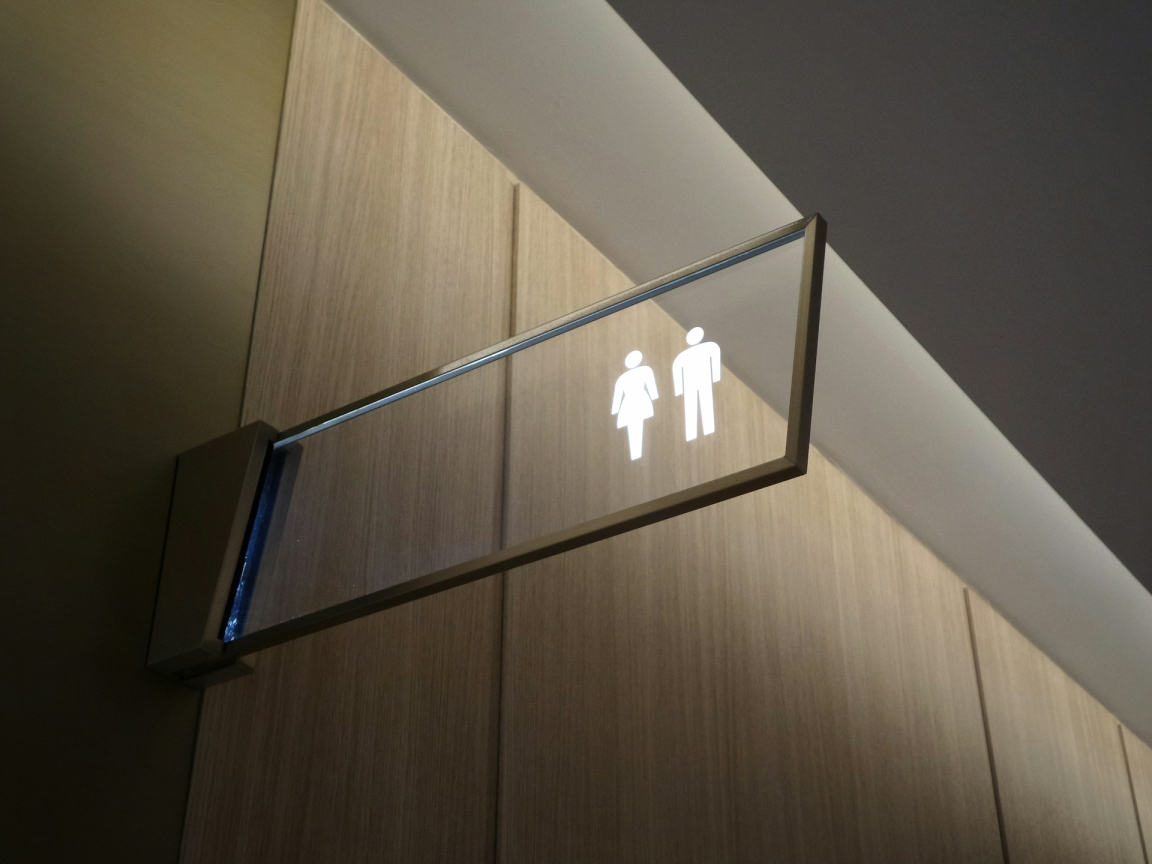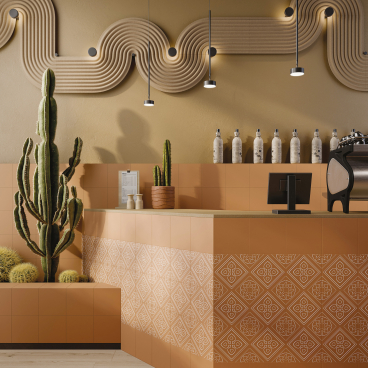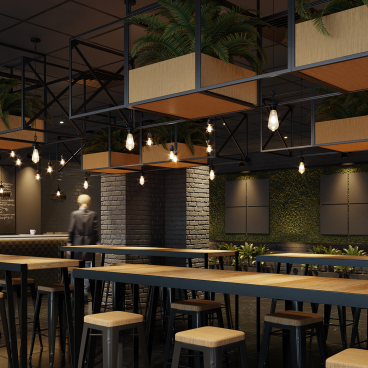Are you ready for Part T? It comes into full effect 1 April 2025.

Photo by Possessed Photography via Unsplash
It’s almost six-months since Part T – the new Schedule 1 amendment to the Building Regulations 2010 – was announced.
And from 1 April 2025, the regulation comes into full force, signifying the end of the grace period.
If you’ve worked on the design of a workplace or public building in England requiring Building Regulations approval since 1 October 2024, you’ll be no stranger to the new Part T guidance, which states separate toilets for men and women must now be provided.
While gender neutral, universal toilets – or Superloos – can still be delivered, this must be in addition to single-sex provision. Clear signage (men/women) must also be installed.
After initially speaking with architects, designers, and developers to find out what challenges they expected to face considering the new Part T, as April fast approaches, Material Source Partner, Concept Cubicle Systems was keen to continue this conversation with sector professionals to find out what’s changed so far. For better, or worse.
Since then, the team has also delivered lots of hands-on support with specification manager, Jackson Sutcliffe, delivering a dedicated CPD to over 40 practices on the regulation changes from the Studio. Plus, advising on the best Part T compliant washroom solutions for your schemes.
Corina Gheorgheoiu, interior designer at jmarchitects, commented having worked on a washroom design of this nature for a recent project, “Jackson and the Concept Cubicle Systems’ team have been incredibly helpful, especially in how they’ve efficiently summarised the key points of the new regulations, as well as offering us guidance on how to best adapt ongoing projects to meet the new requirements.”
To further support your upcoming projects in line with Part T compliance, here’s a reminder of the key changes, plus a collation of your views on how you have, or will, respond.
What’s Part T? And does it affect my project?
An overview of Part T can be found here. It applies only to workplace and public buildings in England requiring Building Regulations approval. Following a grace period of six-months, from 1 October 2024, the guidance now comes into full effect on 1 April 2025.
What’s the initial response been?
Diversity & dignity
The response has been mixed, to say the least. Looking at what spurred the regulation change, the basis on which Part T was founded in the first place has been called into question by some. Corina Gheorgheoiu, interior designer at jmarchitects, said: “The published consultation data shows there was a lack of diverse user representation, hence our concern that the survey doesn’t accurately reflect a varied citizen perspective.”
This is in relation to a period of consultation by DLUHC, investigating whether gender neutral facilities open to all provided the appropriate level of privacy and safety to users. The findings showed that 81% of those consulted were in agreement for the intention of single-sex toilets.
Where cubicles and handwashing facilities were provided in a shared space, this was suggested by the study as leading to: “increasing waiting in shared queues, decreased choice and less privacy and dignity”.
Howard Powsney, director, Incognito, believes that Superloos offer more dignity, and the flexibility needed to cater for all.
“Prior to the introduction of Part T, we were already working with our end user clients on a flexible approach to gender specific and universal self-contained washroom facilities through interchangeable signage.
“This practice allows our clients the post-occupancy opportunity to monitor and respond to their colleagues needs, ensuring inclusivity, privacy and dignity are protected.”
In Concept's last piece on Part T, the challenge for developers was stated in terms of space planning before knowing the gender split of future occupants in their buildings. Isla Wishart, senior architect, Corstorphine & Wright, confirmed this:
“From a design point of view, when designing a new workplace environment, it can often be difficult to predict the split of the male/female workforce anticipated in the space and the typical calculation for this can often lead to over or under provision.”
Incognito’s approach led by end-user testing highlights post-occupancy studies now proving crucial to ensuring space efficiency in a post-Part T world.
Sacrificing space
This concern around space is a common theme that runs through the insight shared. Ellie McCrum, associate designer, Ekho Studio, believes different elements of Part T will impact in varying ways depending on the ‘cultural standpoint of the final occupier’.
“I think the new regulations will lead to very mixed outcomes. They’ve obviously come about because so many people felt uncomfortable using all-gender ‘Superloos’, but the new ruling favours tradition, with gender-neutral washrooms now optional. In effect, this means they’ll often be sacrificed for lettable space, leaving a different group of people feeling uncomfortable.
“Whether or not the extra option is incorporated will probably depend on the cultural standpoint of the final occupier, especially when it comes to Cat B workspaces. For Cat A schemes, owners are already advised to over-specify with a 60% male and 60% female provision. Weighing up whether to add an existing washroom will be a major spatial challenge for them because they don’t know the breakdown or standpoint of the incoming tenant.”
The need for flexibility, highlighted by Howard, once again comes to the fore. And when it comes to clients making a decision between catering for all and cutting space, Ellie believes it will prove tricky to sway them on the latter:
“On the whole, we believe clients will be unlikely to cut social spaces, including kitchens and collab lounges, in favour of extra toilets. They certainly won’t sacrifice desk space!”
Could the days of offering a spectrum of choice be gone?
“On a large office refurb last year, we had all the options across different floors, with M/F toilets on three of the four floors and gender-neutral toilets on the ground floor, as well as accessible toilets on each storey. That seemed ideal, but I doubt now we’ll see that scenario again in the near future” Ellie says.
The danger in a loss of space that Ellie highlights was backed-up by Isla Wishart, who has experienced this on a live project.
"The Part T changes have only really had an effect on one of my live projects, this resulted in a redesign of the WCs throughout the building and resulted in a loss in cubicles.
“We were lucky enough that we had overprovided in the first place, so the changes did not have a detrimental effect on the scheme. This was a relatively simple alteration but had the space been tighter we may have had a much bigger problem”.
Inclusivity & accessibility
As well as the space implications spurred by Part T, and the emphasis on gender separation, there are also restrictions around the design of the interior of cubicles themselves. Although this isn’t necessarily a bad thing, Corina believes – as it promotes greater accessibility – it could be viewed as one benefit overriding another.
“Our role as designers is to challenge our clients and drive continuous innovation in the design and construction industry.
“While the new Part T requirements reinforce the need for accessible toilet provisions, such as the small shelf and wall hooks, which is a big positive step towards inclusive design – we can’t help but think that the government is backtracking on the gender progressive legislation and equality act by focusing on the single-sex toilets.”
This conundrum around some benefits being neutralised by other conditions in the Part T guidelines is shared by Wincey Lam, senior technical & interior designer at SpaceInvader, who believes the new regulations will “see us going back full circle to the pre-Superloo-era”.
Though the studio hasn’t yet had to implement the new regulations, Wincey shares there are “incoming feasibility studies where they will be relevant soon enough”. While she believes “some developers will be a little unhappy about the implicit reduction in net lettable space, given the regulations are quite detailed in terms of specifying washroom sizes, as well as stipulating doors preferably open outwards”, she does make the point that though some may see universal toilets being optional as “a backwards step in terms of inclusivity”, “in practice, accessible toilets are also universal toilets.”
What are your views? Do you agree with the points raised?
Concept Cubicle Systems can help with Part T/Approved Document T compliance through a wealth of experience in designing and installing washrooms for workplaces, from cubicles to universal toilets.
With the regulations coming into effect on 1 April, be sure to book your session with Concept Cubicle Systems' specification manager, Jackson Sutcliffe, for an overview of the key changes.




